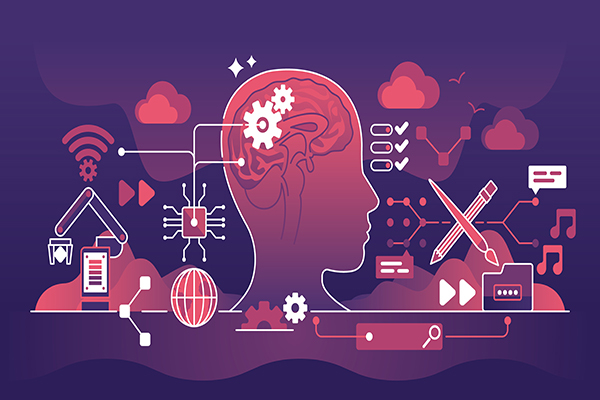
Dr. Mirtha Silvana Garat, a researcher at the Universidad Internacional Iberoamericana (International Iberoamerican University, UNIB), is participating in a study that proposes a novel methodology that improves the accuracy, robustness and practicality of brain-computer interfaces, based on electroencephalography, in order to improve the quality of life of people with motor limitations.
Brain-computer interfaces (BCIs) are an innovative technology that enable direct communication and control of external devices via brain signals, without the need for traditional muscle interaction. This advance is especially promising for individuals with motor limitations, as it will allow them to use their brain activity to communicate and control devices. The operation of the interfaces is centered on the measurement, analysis and decoding of brain signals. Among the various techniques used, electroencephalography (EEG) stands out as a non-invasive method and is widely used. Using electrodes placed on the scalp, EEG records the brain's electrical activity, capturing neural patterns related to cognitive processes, such as motor imagery (MI).
MI, a key concept in BCI, involves mentally simulating physical movements without actually executing them. Users are asked to imagine actions such as moving hands or feet while their brain activity is monitored via EEG. These recordings reveal distinct patterns during MI, forming the basis for BCI-driven control and communication.
Despite its advantages, extracting valuable information from EEG signals presents significant challenges due to noise and artifacts caused by muscle activity, eye movements, and environmental disturbances. Scalp recordings limit the precise localization of brain regions, requiring advanced signal processing and machine learning to mitigate these limitations and improve the spatial specificity of BCI applications. In this context, the study proposes a novel methodology for motor image classification using deep learning techniques, such as convolutional neural networks (CNNs) and recurrent neural networks (RNNs), and feature selection.
Key Results
The use of a hybrid optimization methodology coupled with two-level deep learning enabled significant improvement in the classification of EEG signals associated with motor imagery. This method not only optimizes channel selection, but also improves accuracy in decoding user intentions, which is crucial for the development of more effective and accurate brain-computer interfaces. In addition, this methodology offers a cost-effectiveness advantage compared to other modalities, such as functional near-infrared spectroscopy (fNIRS) and functional magnetic resonance imaging (fMRI), and maintains high temporal resolution.
The study highlights the need for continued innovation in signal processing and machine learning to overcome current limitations and maximize the potential of brain-computer interfaces. For, the ability to accurately decode user intentions through brain signals not only improves the quality of life for people with motor disabilities, but also opens up new possibilities in human-computer interaction.
If you want to learn more about this study, click here.
To read more research, consult the UNIB repository.
The International Iberoamerican University (UNIB) offers the Master's program in Strategic Management with Specialization in Information Technology. A program that provides professionals with the skills and capabilities needed to manage management positions and lead organizational change projects using ICTs or advise companies that want to join the competitiveness of new businesses. Join the business development by studying our master's program and get ready to take your career to the next level!